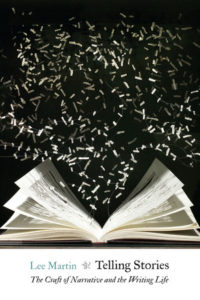The “Man In A Room Alone” Problem (And How to Solve It)
 All of humanity’s problems stem from man’s inability to sit quietly in a room alone.— from Blaise Pascal’s Pensées
All of humanity’s problems stem from man’s inability to sit quietly in a room alone.— from Blaise Pascal’s Pensées
Writing teachers often tell students that it’s Death To Your Story to place “a man in a room alone.” Is this good advice, or, like “Show. Don’t tell,1” advice that is applied far more often than is warranted? Let’s look at the pros and cons.
Mrs. Dalloway and the Ticking Clock
In Virginia Woolf’s Mrs. Dalloway time moves millisecond by millisecond while Clarissa Dalloway’s thoughts flit from flowers to passersby to memories to the meaning of life. Many scenes in this literary novel have no dramatic action and no other characters or events to bump the protagonist off course. However, the author’s goal was not to write a page-turner. Woolf’s project as a writer was to capture the ephemeral moments of time.
Laying her brooch on the table, she had a sudden spasm, as if, while she mused, the icy claws had had the chance to fix in her. She was not old yet. She had just broken into her fifty-second year. Months and months of it were still untouched. June, July, August! Each still remained almost whole, and, as if to catch the falling drop, Clarissa (crossing to the dressing table) plunged into the very heart of the moment, transfixed it, there— the moment of this June morning on which was the pressure of all the other mornings, seeing the glass, the dressing-table, and all the bottles afresh, collecting the whole of her at one point (as she looked into the glass), seeing the delicate pink face of the woman who was that very night to give a party; of Clarissa Dalloway; of herself.2
Clarissa Dalloway is doing what Pascal says is nearly impossible. She sits—and forces us to sit—within the glass bell jar of her own thoughts. The novel is both wonderful and (for many of today’s readers) incredibly slow. We’re stuck in nondramatic scenes where there’s little overt conflict. Characters rarely strive to reach a goal.
The Man In Bed (Alone)
No man is more alone—and no scene less dramatic—than one with a character awakening from sleep. One of my favorite novels— Paul Bowles’s Sheltering Sky— opens with a man in a room alone.
He awoke, opened his eyes. The room meant very little to him; he was too deeply immersed in the non-being from which he had come. If he had not the energy to ascertain his position in time and space, he also lacked the desire.
If it’s truly a no-no to place a man in a room alone, how could I have read that novel and taken any pleasure from it? I’m not talking the movie version with John Malkovich, but the actual book from which the movie sprang.
But wait! Bowles’s 1949 novel about alienation and despair isn’t the only novel opening with a touseled-haired protagonist.
A Woman In Bed (Alone)
The High Road, by Irish writer Edna O’Brien begins with woman in a room alone in bed:
It rose, swelled, then burst and dispersed in a great clatter of sound. First it seemed to be a roar inside my head, a remembered roar, a remembered summons, but then through the warmth of sleep it became clear that it was a roar being uttered at that very moment, either in the room or on the landing outside. I thought I heard my name—Anna, Anna—being uttered with malice.
My hand went instinctively toward the bedside table only to find that there was no lamp, nor table where a lamp could be, and then slowly and unnervingly it came to me that I was not at home, that I had come to this place, this new place, and gradually I remembered my walk of the evening before, the strange town, a mountain, and now this intemperate roar while it was still dark.
Not only is this gal alone. She can barely remember how she got there.
An Epidemic of Amnesia
Walk down a bookstore’s aisles. Open novels at random. A good many (about an eighth by my count) begin with a character emerging from sleep. Not only that, but a frightening number of fictional characters have amnesia. I mean, really, how many people have you ever known who’ve had amnesia? None, I daresay.
Authorial Choices
Why do authors begin their novels this way? Two reasons:
- It’s efficient.
- We’re overly fascinated with our characters.
Let’s look at efficiency. When a book opens with only one character, readers have only one name to learn. The author can get the story rolling without the distraction of other characters and without over-much attention to setting. The reader watches the character’s teeth-brushing, hair-combing and staring-at-a-face-in-the-mirror. (That, too, has turned into a cliché.) Essentially, the author has one ball to juggle, not three or four.
But I think there’s another reason authors open with characters getting out of bed. Very likely we authors got to know our characters by yanking back the sheets and saying, “Wake up! Time to get moving.” Like nutmeg on cappuccino, we sprinkle on amnesia. It’s purpose? To add tension.
An author who kicks off a novel with a character in a room alone, or who writes scenes such as those in Mrs. Dalloway, risks losing the reader to boredom. (Sorry, Virginia Woolf.) Adding amnesia doesn’t help. Readers think, “I’ve read this before.”
Coming Up With A Plan
Once in a while, having a character in a room alone is exactly what the story demands. Just as in real life, fictional people need to make plans. Often they start planning right after an action scene, particularly if what they’d been planning before has failed.
In Pat Barker’s Regeneration, a novel about shell-shocked World War I vets, Dr. Rivers is desperately trying to figure out a strategy to fix soldiers’ psyches and return them to the battlefield. In this passage, he’s in his office considering what kinds of treatments might work best:
The change he demanded of them—and by implication of himself—was not trivial. Fear, tenderness—these emotions were so despised that they could be admitted into consciousness only at the cost of what it meant to be a man. Not that Rivers’s treatment involved any encouragement of weakness or effeminacy. His patients might be encouraged to acknowledge their fears, their horror of the war—but they were still expected to do their duty and return to France.
After running through the difficulties of achieving his objectives, he comes up with a plan to try a new set of experiments. These involve “ice cubes, bristles, near-boiling water and pins.” If the reader hadn’t spent time with Rivers in a room alone, his new plan to try these experiments would strike us as cruel. Instead, when we witness his thought process, we understand that the experiments make ghastly good sense.
Calming Down and Processing
In the same novel the soldier/poet Sassoon has seen ghosts. He needs to process what he’s seen, and weighs the likelihood that Rivers will believe him or write him up as crazy.
The palms of his hands were sweating and his mouth was dry.
He needed to talk to Rivers, though he’d have to be careful what he said, since Rivers was a thorough-going rationalist who wouldn’t take kindly to tales of the supernatural, and might even decide the symptoms of a war neurosis were manifesting themselves at last. Perhaps they were.
Sasson goes to find Rivers, but an orderly tells him Rivers isn’t there and won’t return for three weeks. Sassoon, a man who ought to be talking to someone, faces this setback and must come up with a new plan. Again, he keeps his own counsel and makes his decision when he’s by himself.
Sasson went slowly upstairs, unable to account for his sense of loss. After all, he’d known Rivers was going…Sassoon collected his washbag and went along to the bathroom. He felt almost dazed. As usual he turned to lock the door, and as usual remembered there were no locks. At times like this the lack of privacy was almost intolerable. He filled the basin, and splashed his face and neck. Birds, sounding a little stunned as if they too needed to recover from the night, were beginning, cautiously, to sing.
As in real life, characters in fiction must let their feelings surface. It’s only when they’re alone—after the crisis has passed—that they can regain their equilibrium.
When characters have gone through an ordeal and we’ve seen that ordeal dramatized in real time, we should push them into a room alone. That’s when they can let their feelings surface, process what just happened, and plan what to do next.
Scene and Summary
Writers who want to capture a reader’s attention would do well to avoid the cliché of having an amnesiac character or one awakening from sleep. Similarly, if you write lengthy, nondramatic scenes with solitary characters, readers may lose interest. In summaries the opposite is true. Readers want to see how characters react and how they’re going to cope with what just happened.
Pascal was right about humankind’s inability to sit quietly in a room alone. We can take it, but only when we’re not forced to sit for too long. Passages of soul-searching and rumination are better handled in narrative summary than in scene.
- “Show” refers to scenes. The action slows down and the clock ticks in real time. “Tell” refers to summary passages. These are also called narrative or expository passages. It means that the story is crunching events that take place over minutes, hours, or days into a compact ball. Summary passages don’t try to simulate real time.
- Woolf, Virginia. Mrs Dalloway: (Annotated) (Kindle Locations 492-497). Unknown. Kindle Edition.
 Today we are glad to announce that Sharanya Manivannan’s first novel, The Queen of Jasmine Country, is available for pre-order on Amazon India. According to the book’s synopsis, myths, dreams, desires, the timeless reality of the body and soul – in the midst of nature’s bounty – is at the essence of The Queen of Jasmine Country. This is the first novel in English about the celebrated 9th century Tamil poet Andal, who was known for her erotic devotional verses.
Today we are glad to announce that Sharanya Manivannan’s first novel, The Queen of Jasmine Country, is available for pre-order on Amazon India. According to the book’s synopsis, myths, dreams, desires, the timeless reality of the body and soul – in the midst of nature’s bounty – is at the essence of The Queen of Jasmine Country. This is the first novel in English about the celebrated 9th century Tamil poet Andal, who was known for her erotic devotional verses.
 Local author Andrea Lechner-Becker shares her debut at Changing Hands Phoenix on Thursday May 24 at 7pm.
Local author Andrea Lechner-Becker shares her debut at Changing Hands Phoenix on Thursday May 24 at 7pm. Today we are pleased to share that past contributor Lee Martin has recently released a book titled Telling Stories. The book is intended for anyone interested in thinking more about the elements of storytelling in short stories, novels, and memoirs.
Today we are pleased to share that past contributor Lee Martin has recently released a book titled Telling Stories. The book is intended for anyone interested in thinking more about the elements of storytelling in short stories, novels, and memoirs.
 The Caffeine Corridor Poetry Series featuring poets Jessica Standifird and Sally K. Lehman, takes place on Friday, April 14th at 7 p.m., at {9} The Gallery. This event is hosted by Bill Campana, Jack Evans, and Shawnee Orion in partnership with
The Caffeine Corridor Poetry Series featuring poets Jessica Standifird and Sally K. Lehman, takes place on Friday, April 14th at 7 p.m., at {9} The Gallery. This event is hosted by Bill Campana, Jack Evans, and Shawnee Orion in partnership with 


 All of humanity’s problems stem from man’s inability to sit quietly in a room alone.— from Blaise Pascal’s Pensées
All of humanity’s problems stem from man’s inability to sit quietly in a room alone.— from Blaise Pascal’s Pensées